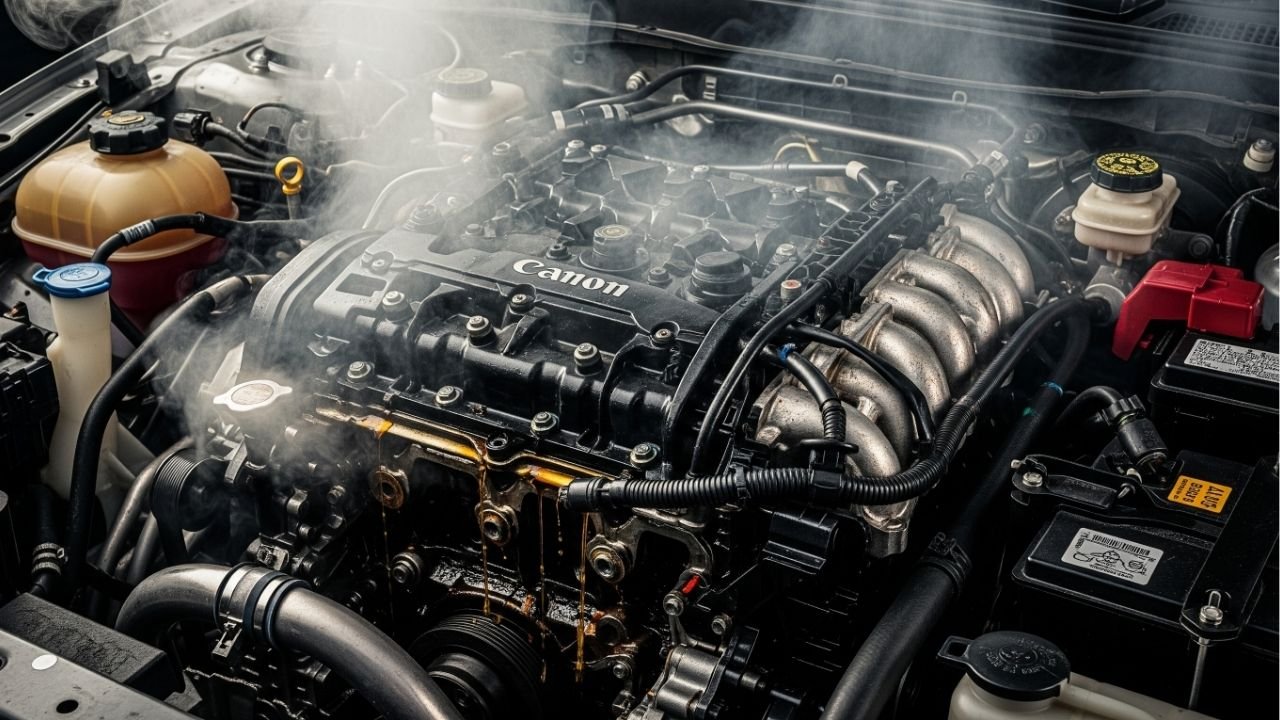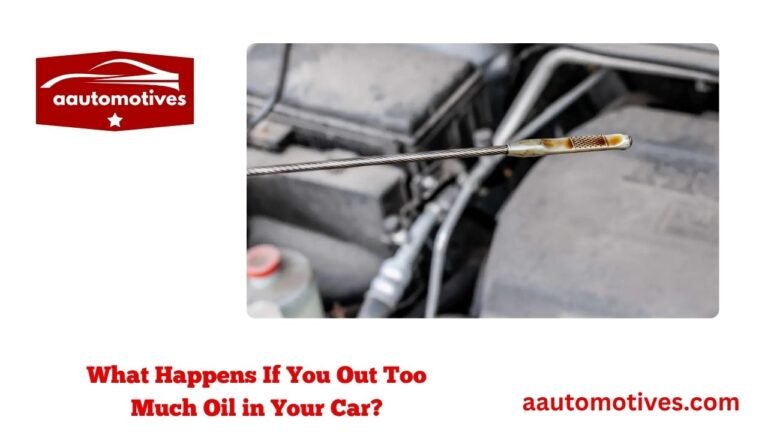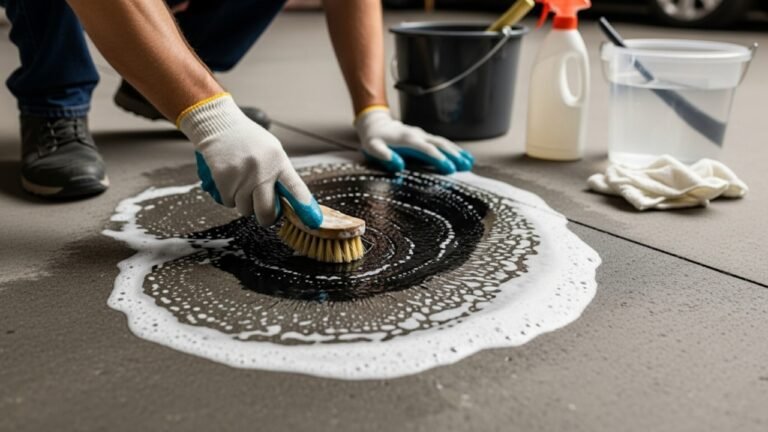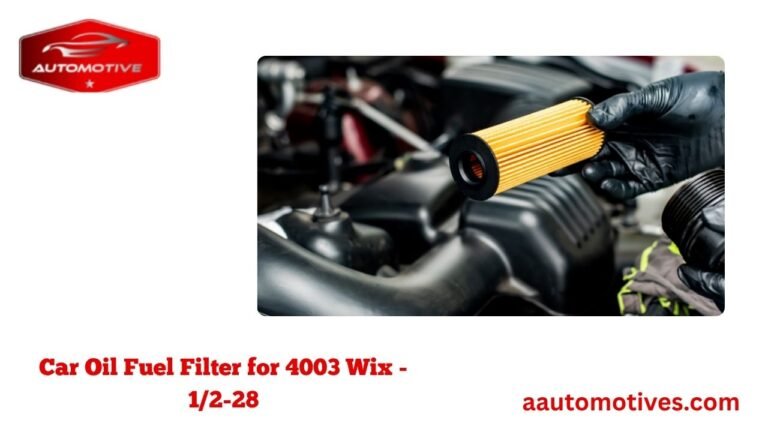Can Too Much Oil Cause Your Car to Overheat?

It was a hot afternoon in Mymensingh when I found myself stuck on the side of the road. The car I loved—my old Toyota—was billowing smoke from the hood. At first, I thought, “Maybe the radiator gave up.” But later, a local mechanic peeked under the engine, wiped his hands with a rag, and said something I’ll never forget:
“Bhai, you put too much oil. It’s cooking your engine.”
Wait—can too much oil cause your car to overheat?
Honestly, most of us were taught to worry more about low oil levels. But the truth is, overfilling oil can be just as dangerous—and yes, it can make your engine run hotter than it should.
In this article, we’ll take a deep dive into:
-
Why engine oil matters
-
What happens when there’s too much of it
-
How overheating sneaks in
-
Warning signs
-
Real solutions (not just “Google fixes”)
So, buckle up. This isn’t just a car issue—it’s your next road trip at stake.
In This Article
- 1 The Role of Oil: Why Your Car Needs It to Stay Cool
- 2 What Happens When You Overfill the Engine Oil?
- 3 Can Too Much Oil Cause Your Car to Overheat? Absolutely—Here’s Why
- 4 Real-Life Signs Your Car Is Overheating From Too Much Oil
- 5 How Much Is Too Much? Measuring the Danger
- 6 Bullet Points: Top Reasons Too Much Oil Causes Overheating
- 7 Is It Safe to Drive If You Overfilled Your Oil?
- 8 How to Fix It: What to Do if You Overfill the Oil
- 9 How to Prevent Overfilling Your Engine Oil
- 10 Case Study: How A Simple Mistake Nearly Ruined a New Car
- 11 Table: Signs, Risks, and What to Do About Too Much Oil
- 12 Why Mechanics Always Warn About Overfilling
- 13 What Should You Do After Fixing the Overfill?
- 14 Pro Tips: Keeping Your Engine (and Oil) in Check
- 15 FAQs: Answering Your Burning Questions (Literally!)
- 16 Conclusion: The Fine Line Between Care and Overkill
The Role of Oil: Why Your Car Needs It to Stay Cool

Think of it as your car’s blood. It:
-
Reduces friction between engine parts
-
Cleans and carries debris to the oil filter
-
Forms a protective barrier
-
And yes—helps in cooling the engine
Here’s the twist: while the cooling system (radiator, coolant, fan) takes center stage, your engine oil also plays a supporting role in heat management. Without proper oil flow, heat builds up quickly.
| Function | Description |
|---|---|
| Lubrication | Reduces wear by cushioning moving metal parts |
| Cooling Support | Absorbs and redistributes engine heat |
| Contaminant Removal | Traps dirt, combustion particles, and sludge |
| Sealing | Helps maintain compression by sealing gaps between pistons and cylinders |
That’s why too little oil is risky. But what about too much?
What Happens When You Overfill the Engine Oil?
You might think, “It’s oil! The more, the better, right?” Not really.
Overfilling the oil increases pressure inside the crankcase. Think of blowing too much air into a balloon—it stretches, then pops. The same principle applies.
Here’s what actually happens:
-
The crankshaft hits the oil pool and whips it into foam
-
That foam reduces oil’s lubricating abilities
-
Air bubbles interfere with oil flow
-
The engine parts heat up, increasing friction and temperature
It’s like trying to fry eggs in a pan full of soap bubbles. Nothing gets properly cooked—and everything overheats.
Can Too Much Oil Cause Your Car to Overheat? Absolutely—Here’s Why
Let’s say this loud and clear: Yes, too much oil can cause your car to overheat.
But why does it happen?
Here’s a simple breakdown:
1. Foamy Oil Can’t Cool
Overfilled oil gets churned by the crankshaft, turning it into a frothy mess. This aerated oil can’t absorb and transfer heat properly.
2. Restricted Flow Through Oil Passages
Excess oil can cause blockages or even clog the PCV (positive crankcase ventilation) system, creating pressure that makes the engine work harder—and get hotter.
3. Gasket and Seal Damage
High oil levels can burst gaskets or seals. This leads to leaks, and once oil leaks onto a hot engine surface, it might smoke or burn, pushing temperatures even higher.
4. Increased Engine Load
The engine has to work harder to push through the excess oil—imagine running with your shoes full of water. That strain turns into excess heat.
Real-Life Signs Your Car Is Overheating From Too Much Oil
Recognizing these signs early can save your engine from a meltdown:
-
Temperature gauge spiking after an oil change
-
Burning oil smell near the hood
-
White smoke or vapor from the exhaust
-
Sticky oil dipstick (too much oil clings)
-
Leaks or drips forming after driving
Personal note: When my cousin in Dhaka topped up too much before a long highway trip, the engine started knocking near Gazipur. It wasn’t until the coolant reservoir overflowed that he realized something was off. Turns out, it was a simple overfill mistake.
How Much Is Too Much? Measuring the Danger
The safe level lies between the MIN and MAX marks on your dipstick. But here’s the thing: just a half-quart extra can be okay—one or more quarts over is where the trouble starts.
Quick Visual Tip:
-
If the oil mark is slightly above MAX: Observe for leaks but you’re likely safe
-
If it’s well above: You need to drain the excess—immediately
Never rely on “it’ll burn off eventually.” Because while it’s burning, it’s damaging your engine.
Bullet Points: Top Reasons Too Much Oil Causes Overheating
-
Foam reduces cooling efficiency
-
Increased pressure damages seals
-
More oil = harder working engine
-
Leaks can cause fires or smoke
-
Improper flow means higher friction
Is It Safe to Drive If You Overfilled Your Oil?
Short answer: It depends.
If you just added a bit extra—maybe ¼ to ½ quart—you might be fine for a short distance. But anything more, and you’re risking:
-
Catalytic converter damage
-
Blown head gaskets
-
Even complete engine failure
It’s not worth gambling your engine for a few kilometers. I once did, and it cost me half a paycheck.
How to Fix It: What to Do if You Overfill the Oil
Okay, so you’ve checked your dipstick and realized—yikes—it’s way too high. What now?
Here’s a step-by-step fix:
Option 1: Use an Oil Extractor
-
Insert the hose down the dipstick tube
-
Pump out until you hit the MAX mark
-
Quick, clean, and avoids a full drain
Option 2: Drain from the Plug
-
Put on gloves
-
Loosen the oil drain bolt slightly
-
Let a small amount out
-
Re-check the dipstick
-
Don’t forget to tighten the bolt!
Option 3: Go to a Mechanic
-
Especially if you’re seeing smoke or oil on the ground
-
A shop can clean up excess, check for seal damage, and reset things
How to Prevent Overfilling Your Engine Oil
The best fix is always prevention.
-
Always check the owner’s manual for the right quantity
-
Use a measuring container when adding oil
-
Never “guess”—pour a little, check, repeat
-
Ask your mechanic to double-check oil levels after a change
-
Keep a rag in the car and make dipstick checks a habit
Overfilling is usually a human error, not a car defect. But one small error can become a big bill.
Case Study: How A Simple Mistake Nearly Ruined a New Car
Let me tell you a quick story of my friend Raihan from Uttara. He had just bought a brand-new Nissan X-Trail and decided to do the oil change himself, trying to save a few bucks. He poured in oil while distracted, not checking the dipstick. Result? He ended up with almost 1.5 liters too much.
The next day, his car started stalling, and the engine got hot fast—even though it was just morning traffic in Dhaka. Luckily, he stopped the car before it overheated fully. The mechanic at the local garage told him:
“Apni engine-e joto-tuku lage, tar cheye beshi diley eita poison moto hoy.”
(Translation: “Giving more oil than required is like giving poison to the engine.”)
It cost him a gasket replacement and a lot of stress.
Lesson? More doesn’t mean better—especially when it comes to oil.
Table: Signs, Risks, and What to Do About Too Much Oil
| Symptom | Cause | Risk Level | Fix |
|---|---|---|---|
| White/blue smoke | Oil in combustion chamber | High | Drain excess oil; check spark plugs |
| Engine overheating | Foamy oil, poor lubrication | Very High | Drain excess, flush engine if needed |
| Oil leaks | High pressure damaging seals | Medium | Replace gaskets/seals, clean up excess |
| Dipstick shows far above MAX | Overfilled during oil change | Depends on excess | Use extractor or drain from plug |
| Engine knocking | Parts hitting oil foam | Very High | Check for damage; fix or replace components |
Why Mechanics Always Warn About Overfilling
When you visit a reliable workshop, most trained mechanics will tell you to stick to manufacturer specs. Why? Because they’ve seen it all:
-
Destroyed turbochargers from oil leaks
-
Catalytic converter clogs from burning oil
-
Oil reaching the spark plugs, causing misfires
Some might shrug and say it’s no big deal. But the truth is, your car is designed for precision—not “close enough.” Too much oil throws off that balance.
If a mechanic doesn’t warn you about overfilling, that’s a red flag.
What Should You Do After Fixing the Overfill?
Once you’ve drained the excess oil, don’t just walk away. There are a few smart steps you should follow to make sure your engine is happy again.
✅ Post-Drain Checklist:
-
Check dipstick again after engine cools down
-
Look for leaks around the oil pan, valve cover, or rear seals
-
Watch the temperature gauge for the next few drives
-
If smoke was coming out, inspect the exhaust system
-
Consider changing the oil filter if it was recently installed
Let your engine run at idle for a few minutes after draining. Listen for sounds, watch for smoke, and trust your nose—a burning smell is your engine’s way of saying something’s wrong.
Pro Tips: Keeping Your Engine (and Oil) in Check
Let’s wrap up with some quick, no-nonsense tips that every driver should remember.
Oil Tips to Live By:
-
Always check the manual for the exact oil quantity
-
Make dipstick checks part of your monthly routine
-
Never add oil when the car is running or hot
-
Use funnel and measuring jugs to avoid over-pour
-
If unsure after an oil change, let the engine run for 5 mins, then recheck
These little habits can save your engine—and your wallet.
FAQs: Answering Your Burning Questions (Literally!)
Let’s tackle some frequently asked questions to make sure no confusion remains. These answers are short, clear, and based on real-world driving experiences.
❓ Can overfilled engine oil damage the radiator?
Not directly. But when excess oil causes overheating, the engine gets too hot. That heat can indirectly stress the radiator and other cooling components, causing cracks or coolant loss.
❓ How long can I drive with too much oil in the engine?
If it’s just a little over—maybe ½ quart—you can drive short distances. But driving long-term with excess oil is dangerous. The longer you run it, the more damage you risk to gaskets, seals, and internal parts.
❓ Will a check engine light come on if there’s too much oil?
Yes. Overfilling can trigger sensors like the oxygen sensor or crankcase pressure sensor. The Check Engine Light might come on, especially if there’s oil burning or leaking into the exhaust.
❓ Can too much oil cause white smoke?
Absolutely. Excess oil can reach the combustion chamber and burn, creating thick white or bluish smoke. This is not just annoying—it means oil is going where it shouldn’t.
❓ How do I check if my engine oil level is correct?
Use the dipstick when the engine is cool and off. Wipe it clean, reinsert, then check the level. The oil should sit between the MIN and MAX lines—closer to MAX is okay, but never over.
Conclusion: The Fine Line Between Care and Overkill
So, to circle back to the question—can too much oil cause your car to overheat?
Yes, it absolutely can. It’s not a myth. It’s not paranoia. It’s real, and it can lead to serious engine problems. But here’s the good news: it’s also 100% preventable.
Like most car maintenance mistakes, overfilling oil doesn’t come from carelessness. It often comes from caring too much—wanting to do the right thing but going a little too far. And that’s okay. We all learn.
So next time you change your oil—or even top it off—take your time.
Measure. Check. Breathe. Your car will thank you.
And your engine? It’ll stay cool—literally.






